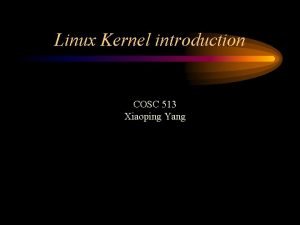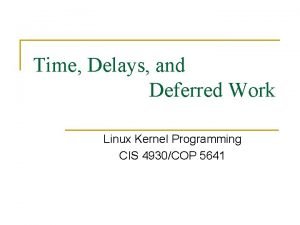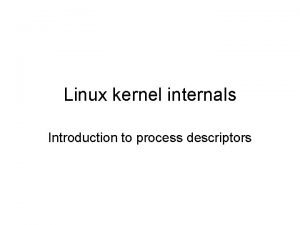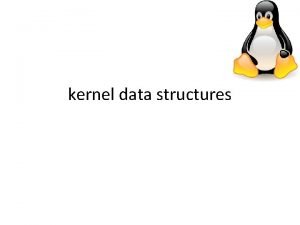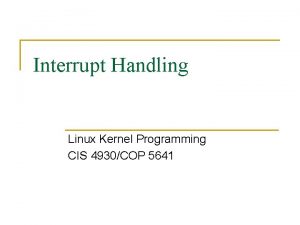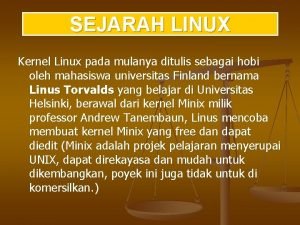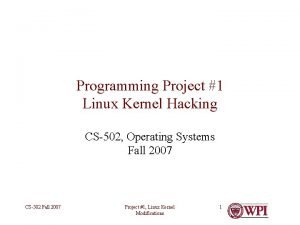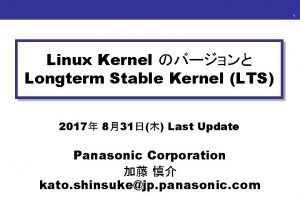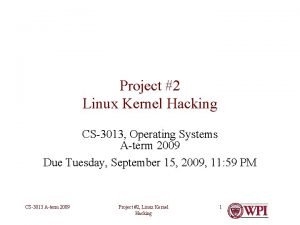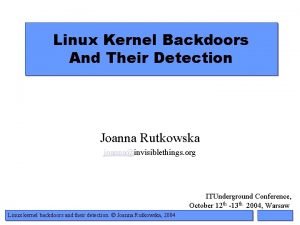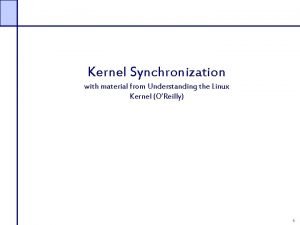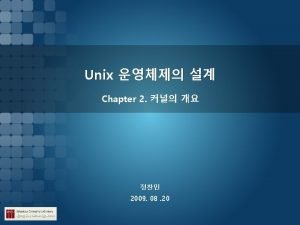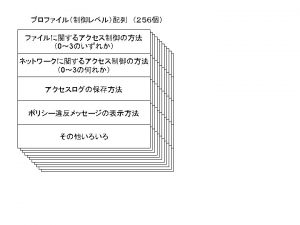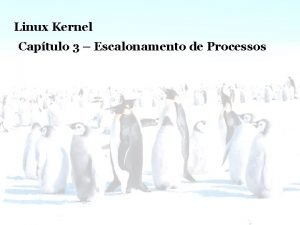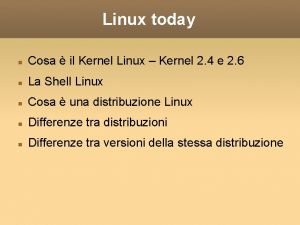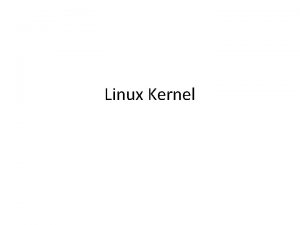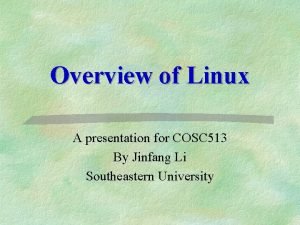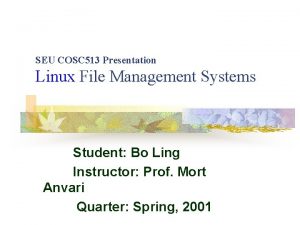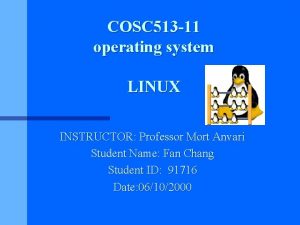Linux Kernel introduction COSC 513 Xiaoping Yang What















- Slides: 15

Linux Kernel introduction COSC 513 Xiaoping Yang

What is Linux ¨A clone of Unix operating system ¨Provides for the efficient management of system resources: ¨Linux is almost a freeware ¨First developed for 32 -bit x 86 -based PCs (386 or higher). ¨Three major components: ·Kernel ·Shell Environment ·File structure

What is the Linux Kernel? ¨The Heart of the Linux Operating System ¨Provides for the efficient management of system resources: ·CPU ·Interprocess Communication ·Memory ·Devices: *Disks *Terminals *Networks *Printers

What inside Linux Kernel is a monolithic kernel Linux kernel Kernel contains: ·System Call interface ·Memory Manager ·File System ·Network support

Linux Processes and Tasks Linux Process = Executing Program Linux Task is a generalization of a Thread ·Single threaded process is represented as a task ·Multi-threaded process is multiple tasks ·Only visible to the programmer and the kernel. The Scheduler decides which task(s) gets to use the CPU(s)

Linux Scheduler ·Multi-level queue scheduler ·Three queues SCHED_FIFO - standard priority. ·Highest priority. ·No time-slice ·"supervisor" processes only SCHED_RR - priority round robin. ·Highest priority RR runs for 1 time slice. ·"supervisor" processes only SCHED_OTHER - time-sharing ·All Linux user processes

Process Tree ·There is a tree like relationship among processes: Given the following: $ netscape & $ emacs & $ xfig & ·bash is the parent process ·netscape, emacs and xfig are children of bash and are siblings ·netscape is the oldest sibling ·xfig is the youngest sibling ·Linux stores this structure as linked lists

Process Tree (cont. )

Task Tree For every task the kernel maintains a task_struct contains all relevant information about a task. ·General: ·PID, Program name ·Parent, youngest child, next sibling, previous sibling ·Process Times (start_time, utime, stime, cutime, cstime) ·Scheduling algorithm, priority, nice value, errno ·Process state ·Owner: ·UID ·GID

Task tree (Cont. ) ·Files: ·Information on all files opened by the process. ·Stored in the fs_struct sub-structure ·Memory: ·Information about the memory used by a process. ·IPC / Synchronization: ·Pointers to acquired Semaphores ·Bitmask of received Signals and associated Signal handlers ·Some other stuff. . . Linux stores all task_structs in a doubly linked list.

Linux Process State

Interrupts and System Calls ·An interrupt is a request from the hardware for immediate attention. ·Two types of interrupts in Linux: ·Fast Interrupts ·Suspend current task, process interrupt, resume task ·All other interrupts are generally disabled ·Keyboard interrupt ·Mouse interrupt

Interrupts and System Calls (cont. ) ·Slow Interrupts ·All registers are saved. ·Only interrupts of same type are disabled. ·Scheduler is called when ISR exits. ·Timer interrupt ·Disk Drive interrupt ·System calls

Fast Interrupts in Linux ·Suspend current task ¨Save CPU registers that might be altered ·Switch CPU to kernel (system/supervisor/etc. . . ) mode ·Block all interrupts ·Call Interrupt Service Routine (ISR) ·Unblock interrupts ·Switch CPU to user mode ·Resume suspended task ¨Restore saved CPU Registers

END
 General security
General security Linux 513
Linux 513 Mao zedong vs deng xiaoping
Mao zedong vs deng xiaoping Linux kernel delay
Linux kernel delay Linux kernel internals
Linux kernel internals Kernel data structures
Kernel data structures Linux kernel interrupt handler example
Linux kernel interrupt handler example Eclipse linux kernel
Eclipse linux kernel Kernel
Kernel Linux kernel hacking
Linux kernel hacking Linux kernel lts
Linux kernel lts Linux kernel hacking
Linux kernel hacking Nf_hook_ops
Nf_hook_ops Linux kernel synchronization
Linux kernel synchronization Linux timeline history
Linux timeline history Linux kernel block diagram
Linux kernel block diagram

